The textile waste recycling project report provides a detailed roadmap for converting textile waste into valuable materials. This guide helps you understand the types of textile waste, efficient collection and sorting methods, cutting-edge recycling technologies, and essential business models. Whether you’re starting fresh or seeking to optimize an existing project, this report offers actionable insights to make your recycling efforts successful and sustainable.
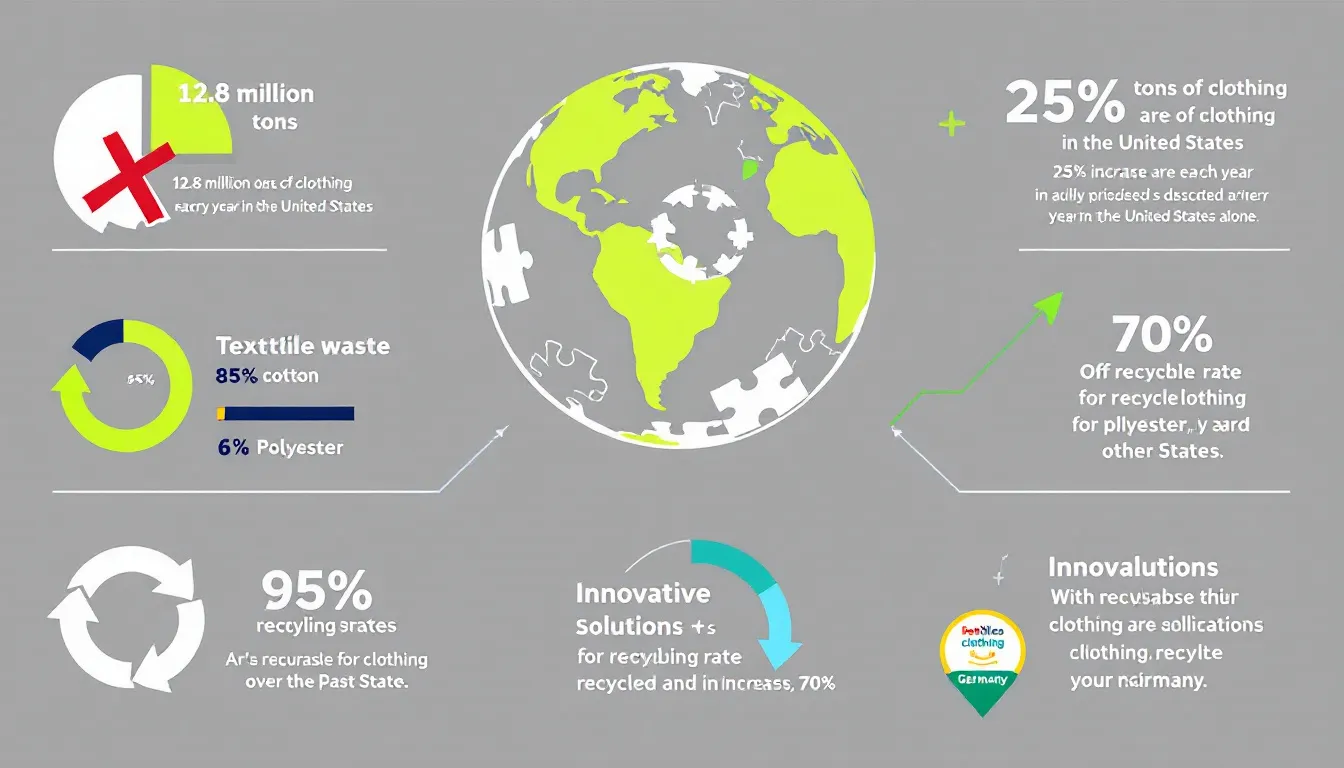
Understanding Textile Waste Recycling: Textile waste recycling involves recovering fibers, fabrics, or yarn and transforming them into new products such as clothing, rags, and scraps. Although it has great potential, only 12% of clothing sold globally is recycled, highlighting a considerable gap. The textile industry significantly adds to global waste and pollution, making recycling crucial for sustainability.
Environmental Benefits: By recycling textiles, the demand for raw materials is reduced, conserving resources and lowering carbon emissions. The process extends the life cycle of fabrics, thus minimizing landfill waste. Shockingly, less than 0.5% of textiles are recycled by mass, underscoring a vast opportunity for improvement.
Urgency of Recycling: With textile waste taking up 5% of landfill space, there’s an urgent need for effective recycling solutions. By recycling textiles, the need for new fibers is diminished, conserving water, energy, and chemicals, and reducing pollution. Around 85% of textile waste ends up in landfills, demonstrating an immediate need to address this issue.
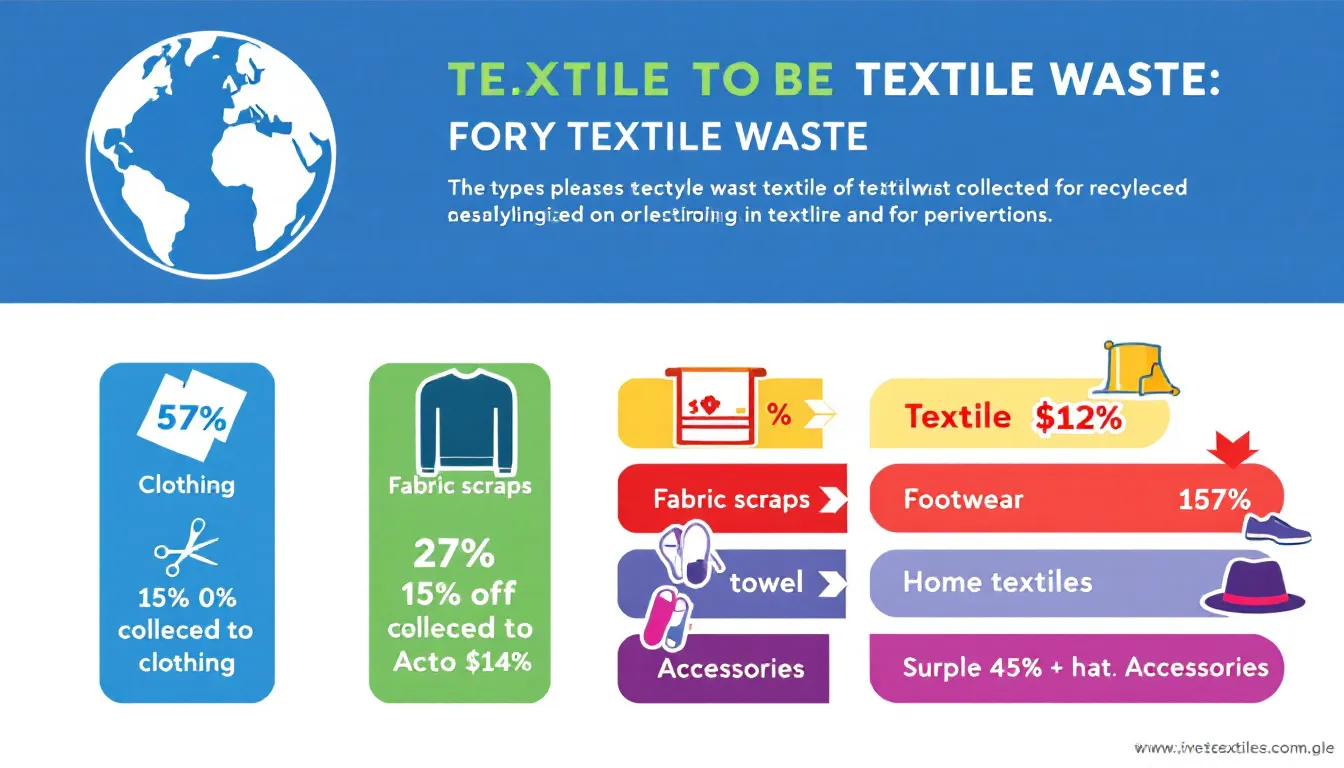
Textile waste falls into three main categories:
Common materials found in textile waste include both natural fibers like cotton and wool, and synthetic fibers such as polyester textile waste. Recognizing these categories of textile materials is vital for implementing effective recycling strategies, as each type requires different technologies and methods.
Efficient collection and sorting methods are the starting point for effective textile recycling. Curb-side pick-up systems provide a practical way to collect used textiles directly from households. Drop-box collection methods can be strategically placed in local schools, places of worship, and busy shopping areas to encourage clothing donations. Promotional campaigns can enhance residents’ motivation to use these drop-boxes.
Retailers also contribute by taking back unsold garments or samples. Multiple sources can generate textile waste. Sources include consumers, retailers, manufacturers, and charities. Sorting is vital to improve recycling outcomes and maintain the quality of recycled products. Textile waste must be sorted, cleaned, and graded before processing.
During sorting, hardware like buttons and rivets must be removed from clothing. Bulk sorting usually requires equipment such as bins and conveyor belts for efficiency. To prevent mildew formation, collected textiles should be kept dry. Technology like GPS tracking and weight sensors can improve the efficiency of monitoring recycling bins.
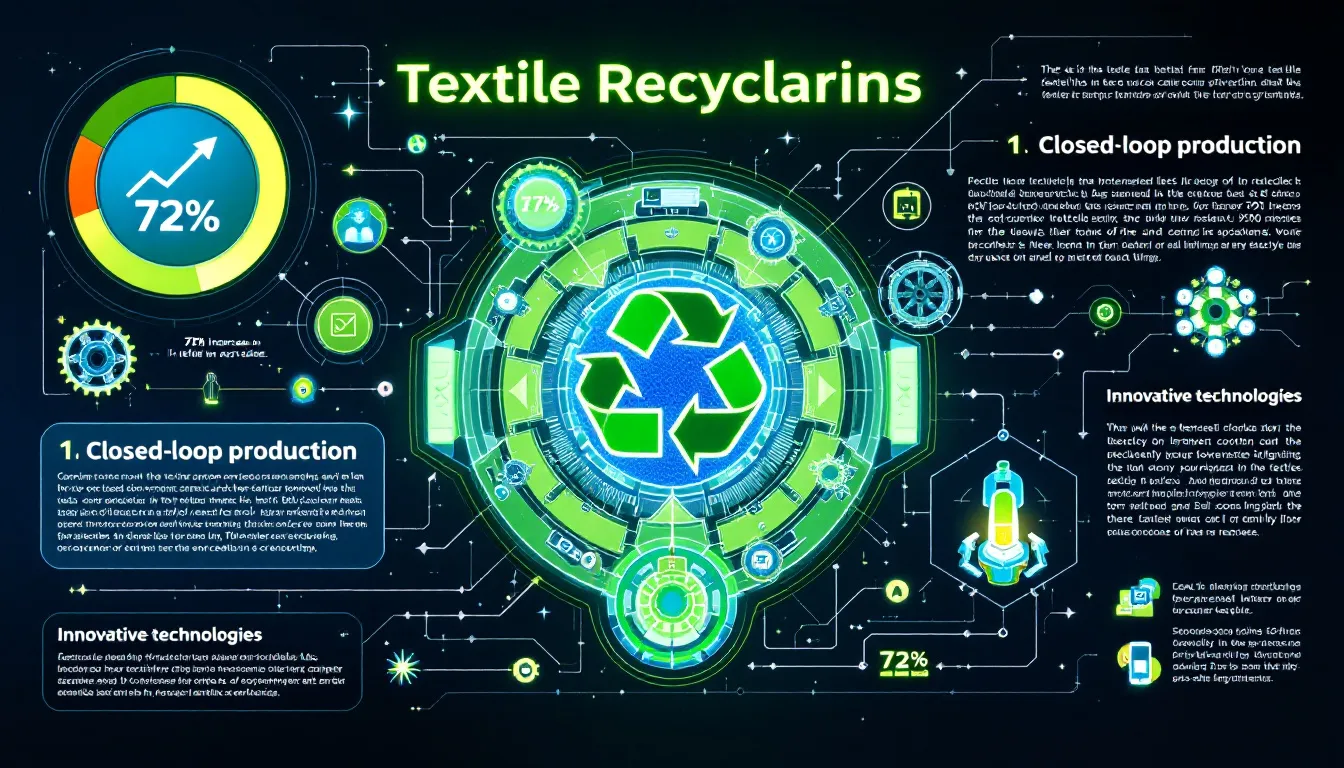
Transforming textile waste into recycled products involves advanced processing technologies. Mechanical, chemical, and biological methods are commonly used for recycling textile waste. Each method presents unique challenges and benefits, with the choice of technology depending on factors like feasibility, costs, and resource consumption.
Mechanical recycling is often considered the most sustainable approach for textile fabric. It also effectively addresses yarn waste. This method involves disassembling and shredding fabrics to maintain fiber integrity. Human intervention is needed to remove zippers and buttons before shredding. Shredded textiles are processed using cutting and granulating machines.
Mechanical recycling produces a range of products, from yarns and felts to filling materials and insulating sheets. Recycled yarn can become luxury blankets and new wool products. The recycling production unit opens, cards, and spins fabrics into yarns, which are then made into knit fabrics. A recycling machine can process up to 200 kgs of textiles daily. This enables efficient daily processing.
Chemical recycling breaks down synthetic fibers like polyester and nylon into reusable raw materials. Techniques like glycolysis, ammonolysis, and hydrothermal liquefaction aid in recycling PET and nylon fibers. Glycolysis breaks down polyester into monomers, and ammonolysis depolymerizes nylon 6,6.
These methods yield significant outputs, including over 82% BHET from PET recycling and substantial bio-crude from high-pressure hydrothermal processes.
Although chemical recycling manages non-biodegradable synthetic fibers, it faces challenges like high energy use and toxic intermediates.
Biological methods use microorganisms such as fungi and bacteria to degrade biodegradable textile fibers. Trichoderma reesei exhibits high cellulase activity on textile waste, making it effective for enzymatic processes. Enzymatic hydrolysis is also used to recover polyester and sugar compounds from textile waste.
Biological recycling, despite its promise, has limitations. Current genetically modified microorganisms lack effective enzymes for quickly decomposing synthetic materials. However, microbial degradation remains promising for future research and development in textile recycling.
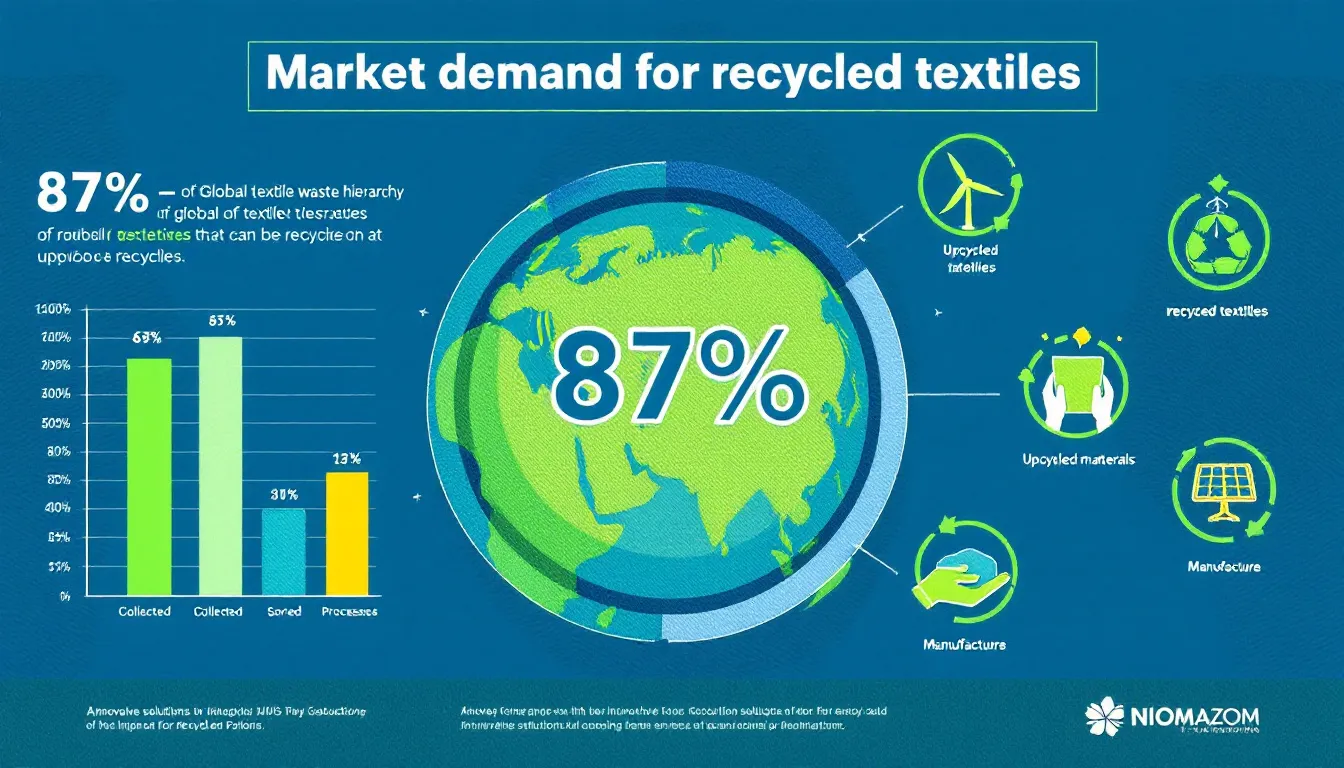
Growing Awareness: In India, there is a rising awareness of the environmental impact of the textile industry, leading to increased demand for recycled textiles. Consumers are becoming more conscious of sustainable fashion choices, which drives the market for recycled materials.
Sustainable Fashion Trends: The trend towards sustainable fashion is gaining momentum in India, with more brands and designers incorporating recycled textiles into their collections. This shift is fueled by consumer demand for eco-friendly products and the desire to reduce the carbon footprint of fashion.
Government Initiatives: The Indian government is actively promoting recycling and sustainability through various initiatives and policies. This support encourages the growth of the recycled textiles market by providing incentives and creating a favorable regulatory environment.
Circular Economy Adoption: The adoption of circular economy principles is becoming more prevalent in India, emphasizing the importance of recycling and reusing materials. This approach is crucial for minimizing waste and promoting the use of recycled textiles in the fashion industry.
Investment Opportunities: The growing demand for recycled textiles presents significant investment opportunities in India. Businesses and investors are recognizing the potential for profitability in the recycling sector, driving further growth and innovation.
Consumer Preferences: Indian consumers are increasingly prioritizing sustainability in their purchasing decisions. This shift in consumer preferences is boosting the demand for recycled textiles, as people seek products that align with their values.
Technological Advancements: Advances in recycling technologies are enhancing the quality and efficiency of recycled textiles production. These innovations are making recycled materials more competitive with virgin textiles, further driving market demand.
Collaborations and Partnerships: Collaborations between brands, manufacturers, and recycling companies are fostering the development of the recycled textiles market in India. These partnerships help create a more integrated and efficient supply chain for sustainable fashion.
Export Potential: India has significant export potential for recycled textiles, with international markets showing interest in sustainable materials. This global demand provides additional growth opportunities for the Indian recycled textiles industry.
Challenges and Opportunities: While there are challenges such as high costs and quality degradation, the opportunities for growth in the recycled textiles market in India are substantial. Addressing these challenges through innovation and collaboration can unlock further market potential.
A successful business model for textile recycling encompasses both pre-consumer and post-consumer waste. Proposed recycling methods may include mechanical, chemical, and thermal processes. End products like recycled yarns, fabrics, and filling materials have diverse industrial applications.
Target industries for recycled textiles include fashion and apparel brands, automotive manufacturers, and home furnishing companies. Local businesses can benefit by participating in textile recycling initiatives, promoting sustainability and reducing environmental impact.
Raw materials for textile recycling include textile waste like cotton, polyester, and wool. These materials can be sourced from factories, garment units, and households. A robust procurement strategy ensures a consistent supply of raw materials.
Partnerships with local businesses and organizations can secure a steady stream of used textiles. Sourcing materials from waste management facilities and recycling centers can offer a diverse range of textile waste.
Machinery and Equipment Requirements: Establishing a textile recycling facility requires specialized machinery and equipment. This includes cutting, shredding, and granulating machines, along with recycling units. The estimated machinery cost varies widely, depending on the scale of the operation and specific equipment needs.
Procurement Options: Procurement options include buying from established suppliers or exploring second-hand equipment to reduce initial costs. Availability of spare parts and maintenance services is crucial for smooth operations.
Choosing the right location for a textile recycling facility is key to its success. Consider factors like proximity to raw material sources, transportation access, and utility availability. The land area needed depends on the operation scale and machinery type.
An efficient factory layout is crucial for workflow and waste management. It includes designated areas for sorting, processing, and storing recycled materials. Proper waste disposal systems should manage non-recyclable materials and minimize environmental impact.
Starting a textile recycling project requires significant financial investment. Project cost includes capital for machinery, land, and buildings, plus working capital for daily operations. Capital investment ranges from 3 to 40 Lakh Rupees for machinery setup.
Operational costs include labor, transportation, and marketing expenses. Accurate cost estimation is crucial for a viable financial plan and securing funding.
A textile recycling project’s revenue model includes various income sources. Income sources include selling recycled textiles and by-products, and offering recycling services. A clear pricing strategy maximizes revenue and ensures market competitiveness.
Sales and revenue forecasts should consider market demand and facility capacity. A break-even analysis helps determine the time needed to cover initial investments and start generating profits.
The financial requirements for starting a textile recycling business include initial investment, operating costs, and working capital. Annual operational costs can range from $100,000 to over $500,000, depending on location and scale. Labor costs typically represent 30-50% of the total operating expenses.
Transportation and logistics expenses can account for about 10-20% of the total operating costs. Rent, marketing, insurance, and compliance fees must also be factored into the budget. Negotiating prices with buyers should cover operating costs and desired profit to ensure financial sustainability.
Navigating the legal and regulatory landscape is crucial for the successful operation of a textile recycling business. Obtaining necessary licenses and certifications ensures compliance with local and international regulations. Adhering to environmental regulations is essential to minimize the ecological impact of textile recycling processes. Regular environmental audits can help maintain compliance with established ecological standards.
Mandatory textile recycling policies can drive industry-wide compliance and foster a more sustainable textile sector. Understanding and adhering to specific safety standards, especially regarding the chemicals used in textiles, is vital for maintaining operational safety and product quality.
For businesses engaged in global trade, knowledge of international safety standards is equally important.
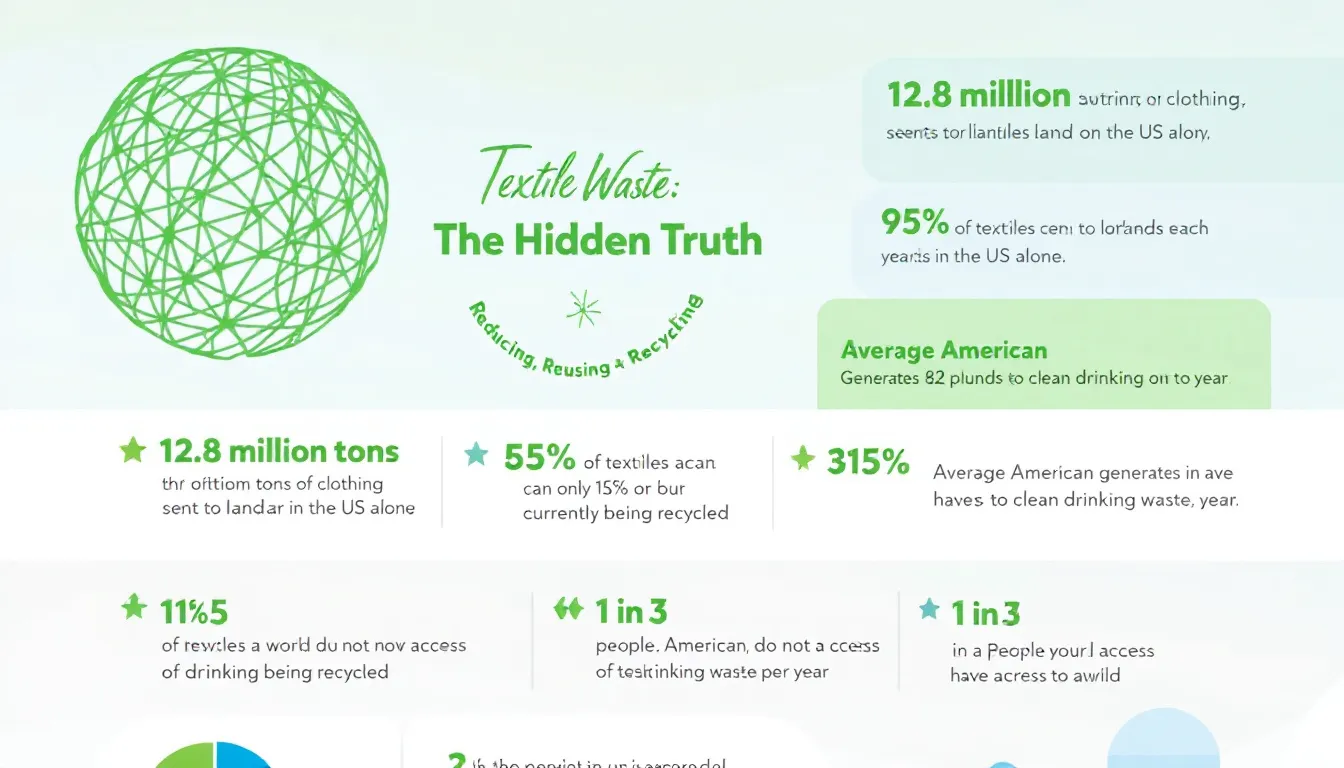
Textile waste recycling offers numerous environmental benefits:
One of the remarkable advantages of textile recycling is its potential to save water usage by up to 79% compared to traditional fiber production. However, the process is not without its challenges. The high cost of operations involved in processing recycled materials is a significant hurdle. Mechanical recycling methods often degrade the quality of fabrics, limiting their usability for future products.
Despite these challenges, the environmental benefits of textile waste recycling make it a crucial component of sustainable waste management strategies. Addressing the high costs and quality degradation issues can pave the way for more widespread adoption of textile recycling practices.
The future of textile recycling relies on the development of new methods to reuse, reduce, and recover value-added products. Innovations in recycling technologies and processes can significantly enhance the efficiency and feasibility of textile recycling. Textile recycling contributes substantially to sustainable bio and circular economies, promoting closed-loop systems that minimize waste generation.
Collaboration between governments, the scientific community, and businesses is essential to enhance recycling opportunities and drive the transition towards sustainable textile practices. Consumer education on sustainable fashion choices can also significantly impact the demand for circular products.
Government financial aid and support for establishing textile-specific waste collection centers can further facilitate better recycling efforts.
Real-world examples of successful textile recycling projects demonstrate the potential and viability of various recycling methods. The ReShare project transformed old military uniforms into new yarns for humanitarian blankets, significantly reducing water and energy consumption. Recover, through innovative recycling techniques, achieved yarn quality comparable to virgin yarn at a lower environmental impact.
Circle Economy collaborated with G-Star RAW to create new denim fabrics from returned stock, aiming to compete with virgin cotton denim in price and quality. ReBlend focuses on recycling mixed post-consumer textiles into high-quality products, showcasing the feasibility of closed-loop textiles.
These case studies highlight the environmental and economic benefits of textile recycling, encouraging more businesses to adopt sustainable practices.
Textile recycling has a profound impact on sustainability and the environment. It significantly reduces the carbon footprint associated with textile production by conserving natural resources and minimizing waste. Effective waste management strategies are essential to handle the large volumes of textile waste generated annually. Social impact and job creation are additional benefits, as the recycling industry can provide employment opportunities and support local economies.
Recycled textiles and materials contribute to sustainable practices by reducing the environmental load and promoting the use of environmentally friendly products. The move towards a circular economy ensures that materials are reused and recycled, minimizing the need for virgin resources and reducing overall environmental impact.
In summary, textile waste recycling is a vital component of sustainable waste management and environmental conservation. The process not only conserves natural resources and reduces pollution but also offers significant economic benefits. The future growth potential of textile recycling lies in the development of innovative technologies and the promotion of circular economy principles.
To succeed in textile recycling, businesses must focus on efficient collection and sorting methods, advanced processing technologies, and robust financial planning. Collaboration between stakeholders, consumer education, and government support are crucial for driving the transition towards sustainable textile practices.
By embracing these strategies, the textile industry can significantly reduce its environmental impact and contribute to a more sustainable future.
Purchasing our comprehensive project report on textile recycling provides valuable insights into reducing the environmental impact of the fashion industry. The report highlights job creation opportunities stemming from textile recycling initiatives and addresses the pressing issue of textile waste, which produces 92 million tonnes annually worldwide.
Our analysis can help stakeholders understand the financial benefits associated with recycling textiles, offering a detailed overview of market trends, investment opportunities, and operational strategies.
This report serves as a valuable resource for businesses looking to implement sustainable practices and contribute to a more environmentally friendly textile industry.
In conclusion, textile waste recycling is not just an environmental necessity but a viable business opportunity. By understanding the various aspects of textile recycling, from collection and sorting to processing technologies and market demand, businesses can make informed decisions and contribute to a sustainable future. The transition towards a circular economy, supported by innovative recycling technologies and government policies, is crucial for the growth of the textile recycling industry.
We hope this comprehensive guide has provided you with the knowledge and inspiration to pursue textile recycling initiatives. Together, we can reduce the environmental impact of the textile industry and promote sustainable practices that benefit both the planet and the economy.
The main types of textile waste include pre-consumer waste, which occurs during production, post-consumer waste generated from discarded clothing and textiles, and industrial waste from manufacturing processes. Each type contributes significantly to overall textile waste, highlighting the need for better waste management solutions.
Textile recycling significantly conserves natural resources and reduces pollution, making it a crucial step towards environmental sustainability. By opting for recycled textiles, we also save water and minimize landfill waste.
The common methods of textile recycling involve mechanical recycling, where materials are physically broken down; chemical recycling, which involves breaking down fibers at the molecular level; and biological methods that utilize organisms to decompose textiles. Each method contributes to reducing waste and promoting sustainability in the textile industry.
Businesses can benefit from a textile recycling project by generating revenue from recycled products, achieving cost savings, and enhancing their sustainability initiatives. Implementing such projects not only improves the bottom line but also supports environmental responsibility.
Textile recycling faces significant challenges such as high operational costs, degradation of material quality, and the need to comply with various regulatory standards. Addressing these issues is crucial for improving the sustainability and efficiency of textile recycling processes.